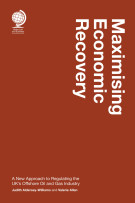
“… The universal truth about partner compensation… is that there is no universal truth” (page 85). Far from being a cry of despair, this excellent book analyses and evaluates all the elements which need to be considered to ensure “equitable” Partner Remuneration.
This book is like opening a deep trunk entitled “Partner Remuneration”, which is full of wrapped presents. Opening a parcel of thoughts; looking deep into a bag of perceptions; struggling with a packet of ideas; assimilating the implications of some thought-provoking concepts, all generate a feeling of anticipation and the promise of enlightenment. This excellent book meets these expectations.
The “presents” in the trunk include clarity on meanings and interpretation, for example, what does “fairness” really mean and to whom? They include objective evaluation of the benefits and risks of different approaches and modifications, for example, the chapters on “Lockstep systems and their variations” (page 55 - 72) and “Table manners: rewarding performance without ‘eat what you kill’” (Page 73 - 86). All of these are influenced by a range of other factors which have to be taken into account, for example, economic forces (page 141), exchange rates (page 125) and the evolution continuum (page 23). It is often said that timing is everything and this is the case, for example, for Law Firm founders as detailed in their chapter (page 153).
Some perspectives are similar; some struggle with each other; some integrate well with others; and by the time you near the end of the book, you may begin to wish that there was some simple formula that would enable all these three dimensional components to fit together as a coherent whole. And indeed you are rewarded in the last chapter: some clear and simple checklists are offered (Page 167 - 174) which enable the reader to go back and answer the questions raised in the book and apply them to the reader’s own firm, taking into account its current ‘ethos’:
- its strategy;
- its organisational design;
- governance;
- culture (or ‘identity’, as the author prefers referred to this element);
- partner remuneration. (Page 28)
in addition to which is added, “ … vision … and even communication and personal relationships between partners.” (Page 155).
The book is logically structured and is divided into five distinct parts. It starts with analysing the building blocks, signalling the complexity that lies ahead. Part 1 (page 9) considers the context of Partner Remuneration, including how it aligns with strategy; organisational design and governance and the sharing of profits or compensation. Part 2 (Page 53) analyses a range of systems in practice: including structures and systems; different firm sizes and regional differences. Part 3 (Page 107) looks at reward determination: performance management and decision-making. Part 4 ( Page 135) evaluates the special issues, including salaried partners and fixed-share partners; lateral hires; and law firm founders. Part 5 (page 167) looks at the way ahead and provide the frameworks/templates for a system for the 21st-century law firm.
The excellent summary/introduction to each part links the themes from the previous part to the focus of the following part and is a very helpful in signposting what is included.
Every chapter is clearly structured, succinct and is easy to read, with useful headings, sub-headings, and the wide range of tables and checklists are particularly helpful in trying to get to grips with all the factors that need to be considered and which influence partner remuneration. The editing is tight and there are no wasted words. This coherence is a great achievement in view of the wide range of backgrounds of the authors, the variety of themes, the range of topics and subjects and the different perspectives.
This book should be read and digested by all lawyers, from the most junior to Managing Partners to Senior Partners. The reason I suggest that junior lawyers read it is that they are then able to understand the complexities and difficulties in rewards and remuneration within a partnership. For more senior lawyers, it will enable them to evaluate which factors are important and should be considered, when deciding the strategy of the firm out of which should emerge partner remuneration, rather than in some firms, where remuneration determines strategy.
Partner remuneration is one of the most problematic aspects of running a firm; large or small. Most partners became lawyers initially to be a lawyer, rather than to be a business person or a manager. For this reason, the smaller the law firm the more difficult it becomes to agree partner remuneration, because there is no remote “remuneration committee” that can be blamed for inequity.
What should partners be rewarded for? Rainmakers need to be rewarded as they replace the inevitable turnover of clients each year, and so new clients are essential. “Then there is the issue of revenue generation versus execution of the work required, and therefore the billing of revenues.” (Page 119). Billable hours/fees received (a discussion in itself) need to be rewarded, because if you do not have the income/cash flow, you do not have a business. Non-financial contribution needs to be rewarded, such as training and recruitment (page 121) because if this does not happen, the firm may not function and it is the routine billable work, which enables the rainmakers to function and the resulting work to be produced effectively and efficiently. Additional factors, such as “collaboration efforts” and “peer and employee satisfaction” are suggested (page 105). Management needs to be valued, but “At the end of the year, when cash is being shared among the partners, many often feel that their billing is more valuable than making sure that all lightbulbs are working.” (Page 122). “The author has seen smaller firms break up on such an issue.” (Page 122). Client retention is added as another factor (page 97).
“Setting compensation must be fair, and seen to be so.” (Page 63). But what is fair? “One of the main reasons why partners move on to another firm or lose their drive and start cruising is their perception that they have been unfairly compensated or that others are better treated without a true justification or basis.” (Page 117) This then raises the question of perception. “… the partnership will often have applied ‘tweaks ‘to the system to achieve a supposedly ‘fair ‘result in a given year; other partners will, however, have deemed these tweaks as abuses of the agreed system. Often some partners will already have exited the firm.” (Page 167).
“Fairness” also relates to openness. The ‘Open’ or ‘Closed’ systems chapter (page 133) which is written like a story is a case-study of overcoming adversity, and illustrates the importance of evolution, creativity, sensitivity, adaptability and flexibility. “The system of remuneration decision-making has moved from secrecy to transparency and from perceived arbitrariness and baselessness to foundation and reasoning.” (Page 134)
Motivation, or the decision-makers’ understanding of motivation, is a key driver in many partner remuneration systems. “One of the most important discussions in law firms with regard to profit sharing systems is their motivational function.” (Page 50.) A common error when considering motivation is to assume what motivates you is what does or should motivate others. However, reaching agreement on what motivates people is difficult to achieve and getting it right and using it properly (when is it manipulation?) is even more difficult.
There is an enlightening full chapter on motivation, “Still trying to motivate by money? How remuneration impacts upon the motivation of lawyers.” (page 109 - 115). Other chapters in the book also analyse motivation in different contexts. The argument against money as a motivator for the behaviour of a lawyer includes, “If this were true, lawyers would not be so bad invoicing their clients, because the only thought would be to get their fees as fast as possible: it would be all about money.” (Page 109). This chapter offers a range of personal factors which might give strong intrinsic motivation (Page 111). Further categories of motivation are suggested including autonomy; mastering excellence; and purpose. (page 157). The important message to come out of the chapter on motivation is that “… the function of the remuneration system is: it serves as a means of distributing profits between the partners on the basis of an appreciation of the performance of each of them. Performance management is completely independent of the remuneration system; that is an important distinction to make” (page 112).
Measurement is another challenging aspect of partner remuneration and performance management. “The most important finding with regard to the quality of legal advice is that individual measurements and reward systems undermine the need for high-quality services in law firms” (page 51) How do you measure high quality legal advice? Can it be measured within the firm or should the performance management evaluation also involve clients? A great lawyer, as measured by lawyers within the firm, might not be perceived as a “good lawyer” by the clients.
For example, two lawyers left a law firm. One was assessed as a “great lawyer” by his peers and the other as “a mediocre lawyer”. No clients made any enquiries about the well-being and future of the great lawyer; every client the mediocre lawyer had contact with, wanted to know how he was and what he was doing.
“Decisions on partners’ remuneration are always easier when the pie is larger and more difficult when it has to be cut into smaller slices.” (Page 134). The book is really helpful on how to construct strategies, structures, systems, governance, operating controls, coordination mechanisms, while retaining desired culture and values in order to make authoritative decisions. The thoughts, ideas, suggestions and guidance in this excellent book will help to ensure that decision-making is rational and objective, but takes into account the individuality of the human dimension.
,





